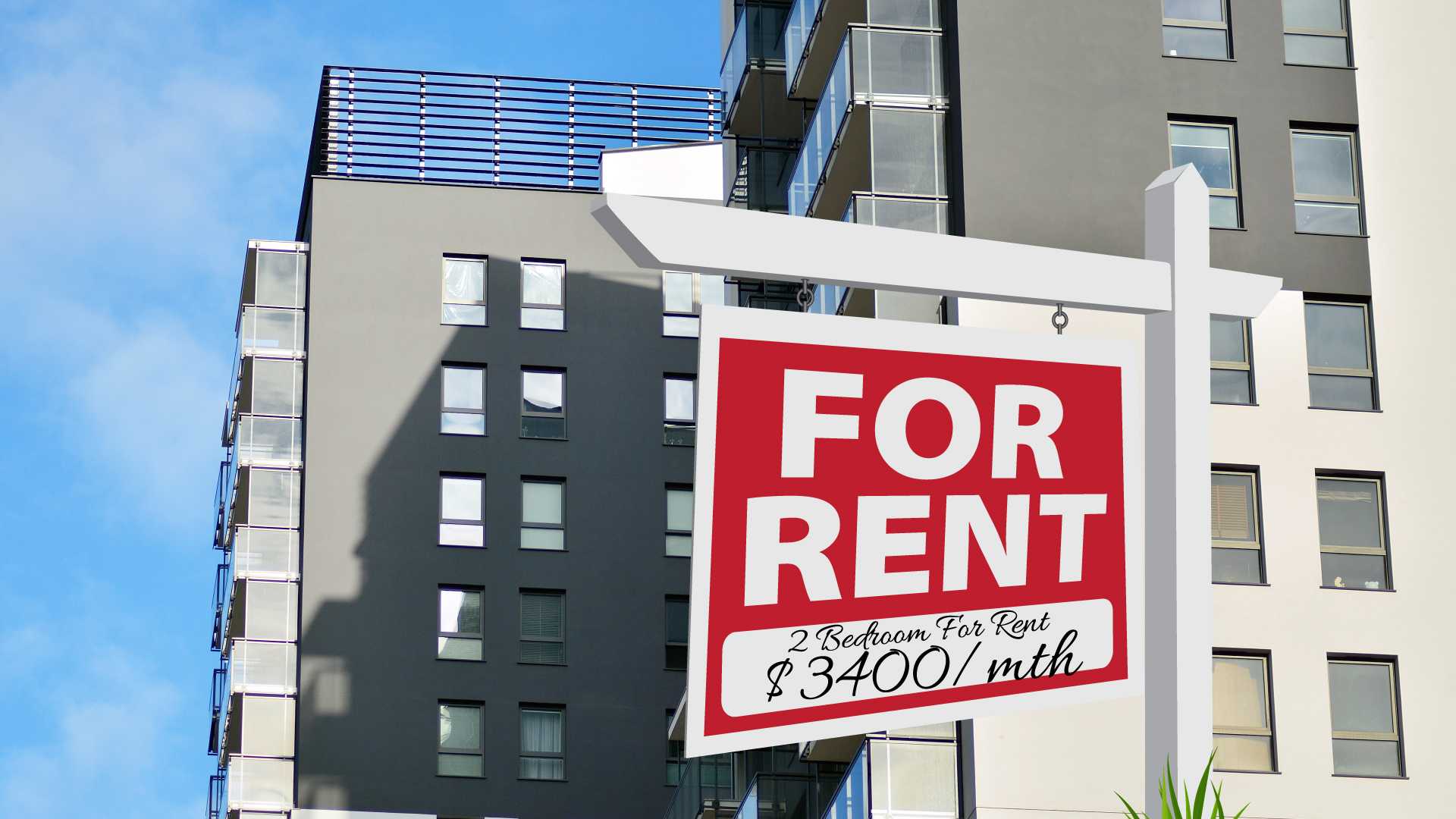Community News
The rise of the Conspiracy Curious – There is a clear awakening happening amongst those who couldn’t be reached before
Published
1 year agoon

BY SIMONE J. SMITH
I vividly remember the responses the team at the Toronto Caribbean Newspaper received at the very start of the pandemic in 2020. This was a time before the numerous alternative media sites began to pop up everywhere. In Canada, the Toronto Caribbean Newspaper team were the only ones brave enough to question what we were seeing in the world. It wasn’t easy: we lost friends, we lost supporters, and we lost businesses that advertise with us, all because we refused to follow the narrative that was being propagated to the masses.
Governments and corporate media were calling this time “Pandemic of the Unvaccinated” and the indoctrinated masses were still thinking facemasks, social distancing, and the inoculation would keep them healthy.
I get it. I have been researching and writing about our current world atrocities for over two years now, and I still have a hard time getting most of my relatives and friends to understand what’s really happening. The difference between this year and last year is that there’s a clear awakening happening amongst those who couldn’t be reached before. It is the rise of the “conspiracy curious” individuals who at one time embraced the common narrative, and now are beginning to question what they believe.
Why? Well because many of the so-called conspiracy theories that we shared have become factual theories. We have learned that we shouldn’t blindly trust anyone in power, whether it’s: the government managing the people, doctors managing healthcare, corporations managing our money, or journalists managing the truth. We know that our freedoms are under attack on multiple fronts and the separation between those who embrace liberty, and those who do not has never been more crystal clear.
What a lot of media houses have been focused on is what has happened in 2022, but what we want to do in this edition is focus on what to expect in the future. Many of us believe that because things seem back to normal that everything is okay. What we want to report today is that everything is not okay. The pandemic was just the beginning, and the global elite has a lot more in store for us.
At the helm of the new agenda is climate change. All of a sudden, there is this public enthusiasm over environmentalism. It started with a group of “experts” and interest groups promoting the “climate crisis,” which was followed by the alarmed discovery of the problem by the news media and broader political class. Then there was this euphoric enthusiasm with the likes of Greta Thunberg being pushed to the forefront conceiving the issue in terms of global salvation and redemption.
Despite the relentless media and activist drumbeat and millions of dollars in paid advertising, public concern for climate change has waned over the last several years, so our governments decided that it is time to step it up. Time to look at what they have planned for us with their proposed Agenda 2030.
Flights are being abolished
The French government has decided to abolish flights between cities that can be reached for less than 2.5 hours by train, as an attempt to decrease the carbon emissions in the country, which is a joint goal for all European Unions.
The new act of the legislature is part of the country’s 2021 Climate Law and was initiated by France’s Citizens’ Convention on Climate, a citizens’ assembly determined to find an alternative to carbon emissions in the country.
New changes are approved also for the use of private jets for short journeys, which are also banned as the country is working to make transport greener and fair for the population.
15-Minute Cities
In early December, the County of Oxfordshire, in England, voted to begin intensely filtering traffic in certain parts of Oxford between 7 a.m. and 7 p.m. This is slated to begin sometime in 2023, upon completion of some existing transportation projects.
I first spoke about climate lockdowns in an article titled, “No Driving on Sundays? The International Energy Agency is calling for new Lockdowns.” I wrote this article in 2021, and shared information about suggestions to restrict private cars’ use of roads in large cities to those with even number-plates some weekdays and to those with odd-numbered plates on other weekdays.
Video Credit: The Friends of Katie Hopkins on Facebook
In another article titled, “Unfortunately, there are no Vaccines for Climate Change.” Preparation for Permanent climate lockdowns,” I exposed the measures proposed by the World Economic Forum to: enforce climate lockdowns; encourage less private car ownership, and less meat by 2030. Unfortunately, these plans are slowly and quietly being executed worldwide
In Oxford, people will still be allowed to walk, bike, or take public transportation wherever they want. Vehicle usage will be monitored with Automatic Number Plate Recognition (ANPR) cameras, the same technology that has been around for more than 20 years to collect money remotely on toll roads. The ANPR cameras will also enable the county to issue permits to private drivers to make a limited number of trips within the city within the restricted time frame.
This new urban planning model was devised in 2016 by Carlos Moreno and popularized by Paris Mayor Anne Hidalgo. They are called 15-Minute Cities. It is the vision of urban places in which residents can access their daily needs and essential services within a 15-minute trip by foot or bike. The concept relies on mixed-use development that puts: commercial services, transportation, recreational facilities, and other urban amenities within a short trip that does not require using a personal vehicle.
This means that strict rules will be placed on car journeys. This green agenda is taking inspiration from the COVID-19 lockdowns. Residents will have to register their cars with the council, and they will be tracked to count their journeys through the key gateways. It is a type of social credit score that is focused on whether you abide by the rules provided
A trial of the 15-Minute City will begin in Oxfordshire County in 2024. Residents will be confined into one of six zones to ‘save the planet’ from global warming and will need permission to leave their zone. Cars will be monitored and electronic gates on key roads in and out of the city are planned.
The parties who benefit from the plan include Oxford University, the bus companies, and the council, which expects to make £1.1m from fining errant drivers.
Agenda 2030
The Heads of State, Government and High Representatives, met at the United Nations Headquarters in New York from September 25th – 27th, 2015.
According to the United Nations Agenda 2030 is a plan of action for people, planet and prosperity. It also seeks to strengthen universal peace in larger freedom. The said goal is to eradicate poverty in all its forms and dimensions, including extreme poverty. All countries and all stakeholders, acting in collaborative partnership, will implement this plan.
The goals and targets came into effect on January 1st, 2016 and will guide the decisions taken over the next fifteen years. They state clearly that all government leaders will work to implement the Agenda within their own countries and at the regional and global levels.
They acknowledge the importance for international financial institutions to be in line with their mandates, and the essential role of national parliaments through their enactment of legislation and adoption of budgets. They expect governments and public institutions to work closely on implementation with: regional and local authorities, sub-regional institutions, international institutions, academia, philanthropic organizations, volunteer groups and others.
It is important to note that Agenda 2030 was written in 2015, well before COVID-19. However, the UN has a COVID-19 Response for the Sustainable Development Goals and is pushing Agenda 2030 in the wake of the pandemic, which may explain why you are hearing about it more often now. Included in this agenda is a push for global vaccination, a strategy known as Immunization Agenda 2030.
Immunization Agenda 2030
IA2030 is an ambitious global strategy to maximize the lifesaving impact of vaccines that, if fully implemented, will save 50 million lives over the next decade. I am going to manage my emotions at this point and keep my opinion to myself, but really! Save 50 million lives? What about the millions of lives that have been destroyed because of the vaccines?
According to the WHO, vaccines are critical to the prevention and control of many communicable diseases, which is an essential part of global health security. In some countries, progress in immunization has stalled, or even reversed (for good reason), and that risks undermining their past immunization achievements.
The Targets
Targets to be achieved by 2030 include:
- Achieving 90% coverage for essential vaccines given in childhood and adolescence
- Halving the number of children completely missing out on vaccines
- Completing 500 national or subnational introductions of new or under-utilized vaccines – such as those for COVID-19, rotavirus, or human papillomavirus (HPV)
They want to ensure that immunization is valued and sought by all people, and that all countries have a reliable supply of high-quality, affordable vaccines, and sustainable financing for immunization programmes. They also want to ensure that innovations to increase the reach and impact of immunization programmes are rapidly made available to all countries and communities.
The language used in Agenda 2030 has some worried it is presenting a “New World Order.” This is because it uses all-encompassing language, such as “for all” and emphasizes the need for a global partnership.
The team at the Toronto Caribbean Newspaper was called to start spreading the truth; with what we have witnessed over the last few years, this call was necessary. We need to make as many people aware as possible because we desperately need allies in this fight.
The war is not over it has just begun!
We, as humans are guaranteed certain things in life: stressors, taxes, bills and death are the first thoughts that pop to mind. It is not uncommon that many people find a hard time dealing with these daily life stressors, and at times will find themselves losing control over their lives. Simone Jennifer Smith’s great passion is using the gifts that have been given to her, to help educate her clients on how to live meaningful lives. The Hear to Help Team consists of powerfully motivated individuals, who like Simone, see that there is a need in this world; a need for real connection. As the founder and Director of Hear 2 Help, Simone leads a team that goes out into the community day to day, servicing families with their educational, legal and mental health needs.Her dedication shows in her Toronto Caribbean newspaper articles, and in her role as a host on the TCN TV Network.

You may like
-


14 Days to a healthier work-life balance
-


Freedom Mas Kick off the start of Band Launch Season 2024
-


How Toronto’s Caribbean Community is Leading in Digital Innovation
-


Almost Homeless – Eight years of Justin Trudeau; Canada’s housing is against the ropes, and Toronto renters suffer
-


Tony Duran (Tony Tonez Tattoos) uses education to demystify and destigmatize the tattoo industry
-


It’s time for a New United Regional Nation of the Caribbean

BY SIMONE J. SMITH
I get it; you just like to stay connected. Everyone does it. Sometimes, it seems like you’re not enjoying yourself as much as you used to. Maybe you’re right, but it’s not like you are addicted, or anything. You can stop whenever you want.
It’s not about being addicted, it’s about finding a balance. Social media can be great, but when it starts affecting your mental well-being, that’s when it becomes a problem.
I get it. It’s easy to get sucked into the digital world without realizing it, but it’s important to take breaks, to disconnect and focus on the real world too, and this week we are going to help you navigate the break that you need to take from the digital diaspora.
In a world where many jobs are fast-paced and digitally driven, the constant influx of emails, notifications, and media feeds can feel overwhelming. For many, being inundated with so much information at once can take a real toll on your mental and physical wellness, but what if there was a way to regain control and harmony again?
In a research study titled, “The Relationship between Social Media and the Increase in Mental Health Problems, (Hasan Beyari) the researcher found that deterioration in mental health is one of the side effects stemming from social media overuse. This study investigated the relationship between social media and the increase in mental health problems in Saudi Arabia. Saudi Arabia has a high level of social media usage, with 82.3% of the population (29.5 million people) using social media in 2022. Young people, who make up 36.74% of the population, are the biggest users of social media in Saudi Arabia, with 98.43% of young people using social networking sites. The top three reasons given by Saudis for using social media are: keeping in touch with friends and family, use of free time, and finding products to purchase.
The researcher recommended that social media users be cautious when interacting with social media features, especially likes, comments, followers, media, and posts, because of their significant effect on mental health.
Another interesting research study titled, “Mental Health Surveillance over Social Media with Digital Cohorts,” (Silvio Amir, Mark Dredze and John W. Ayers) the researchers thought that it was worth noting that they found that Blacks and Hispanics who show a high usage of social media were more likely to be affected by mental illnesses. One possible reason for this disparity is that racial minorities are more likely to come from communities with lower education rates and socioeconomic status (SES), and to be in a position where they lack proper health coverage and mental-health care.
I think that you get the point; it might just be time to step away from that device that for some of you has become your lifeline. I want to introduce the 14-Day Digital Detox Challenge, a challenge that was introduced to me by HubSpot. It is a journey that aims to restore balance and mindfulness in your life, both at work and at home. This challenge has tips, tricks, and tools to help you disconnect where you can—even if your job requires you to be plugged in.
Day One starts your 14-day digital detox challenge with mindful mornings that set the tone for the rest of your day and promotes a sense of calm and focus.
Maintaining a healthy work-life balance is crucial for your overall well-being and productivity.
On Day Two of your digital detox challenge, it focuses on creating clear boundaries between your work and personal life.
On Day Three, you have a chance to organize your digital devices and online presence, so that you can enhance productivity and reduce distractions.
On Day Four of your digital detox challenge, your focus will be on establishing a productive routine that enables focused and efficient work while also allowing time for personal activities and hobbies.
By taking care of yourself physically, mentally, and emotionally, Day Five helps you maintain balance and perform at your best.
Day Six helps you understand that by disconnecting from digital devices and engaging in face-to-face interactions, you can strengthen relationships and joy in your daily experiences.
Day Seven has you setting clear goals, tracking progress, and celebrating accomplishments that can increase productivity and maintain motivation.
Day Eight focuses on: incorporating mindful app usage, setting intentional screen time limits, and reflecting on the impact of excessive screen time. The point is to enhance your well-being and productivity.
By implementing techniques such as: creating filters and folders, utilizing email management tools, setting specific times to check and respond to emails, and writing effective emails, Day Nine shows that you can improve your productivity and reduce email-related stress.
Day 10 is all about re-evaluating your relationship with social platforms and focusing on online activities to reflect on the positive and negative effects of social media on your work- life balance.
Day 11 allows you to explore the importance of avoiding digital multitasking and focus on techniques that can help increase productivity and reduce distractions. By prioritizing single-tasking and implementing strategies like the Pomodoro Technique (designed to improve productivity by breaking work into intervals, traditionally 25 minutes in length, separated by short breaks for time-blocking), you can optimize your work and accomplish more.
Day 12 explores the power of mindful communication and how it can enhance relationships, both in the workplace and personal life. By practicing active listening and mindful communication techniques, you can foster empathy, understanding, and open-mindedness in your interactions.
Day 13 explores the benefits of spending time in nature, and how it can enhance your well-being and reduce stress. Engaging in activities such as walks in the park, gardening, or simply observing and appreciating nature can have a profound impact on your productivity and overall mental health.
Finally, Day 14, the final day focuses on reflection and goal adjustment, allowing you to assess the progress you’ve made throughout the challenge and make any necessary adjustments to your goals. By applying self-reflection and goal-setting techniques, you can continuously improve and set yourself up for ongoing success.
Are you ready for your Digital Detox; don’t worry, in 14 days, you can get yourself back on track, and become even more productive than you were before. Good luck, and if you are open to the challenge, let us know how things go.
Community News
Freedom Mas Kick off the start of Band Launch Season 2024
Published
3 days agoon
April 16, 2024By
Paul Junor
BY PAUL JUNOR
It was an entertaining, inspiring and visually exciting day on Sunday, February 25th, 2024, when Freedom Mas kicked off the start of band launch season 2024. In this the third year of the first and only Jamaican band, led by Johanna Grant, the unveiling of the adult and kids’ costumes were showcased under the theme “What If” at the Small Arts Inspection Building in Mississauga near the intersection of Dixie Road and Lakeshore Shore.
The promotional material on Instagram states, “We are bringing the spirit of Carnival through music, dance, and delicious food. Immerse yourself in the rhythm of the Caribbean with live DJs, playing reggae, soca, and dancehall music that will keep you grooving all day long.” They describe what attendees would be able to experience as they “Explore the diverse marketplace filled with local artisans and vendors offering unique crafts, clothing and accessories.”
There was a wide range of vendors present who showcased a range of services and products targeted to the: Black, African and Caribbean community. One of the vendors was Rose & Ruby Jewelry, which offers the Ultimate Jewelry Guide in which everything you need to know about: cleaning, traveling, measuring and maintaining your pieces. I spoke with Antoinette and Norman of Yardpot Catering Ltd about the different types of authentic: products, services and catering they offered. They are proud of their Jamaican roots and willingly promote the varieties of snacks, treats and products.
I spoke to Johanna who has been the band leader of Freedom Mas since its inception about what she expects for Toronto Caribbean Carnival 2024. She is excited to be the first Mas back to start band launch season 2024. The fact that it occurred during Black History Month was intentional and foundational to connecting carnival to its historic roots as a symbol of independence, freedom and empowerment. There were young and old in the audience who witnessed the visually stunning and stimulating costumes that were showcased during the presentation.
There were several sections that were featured at the band launch, which included:
- Phoenix Mist @thebutterflyave
- KADENCE Rhythmic Flow of
- Essence of Dreams-@queentcarnival
- Thoughts of the Future@angelicxarnival
- Port Royal Pirates of the Caribbean
In the audience was Jennifer Michelle Hirlehey, Board Chair of the FMC and CEO, Mischka Crichton, Stephen Dasko, Councilor of Ward 1, as well as Martin Reid, Councilor of Ward 3 of the City of Mississauga enjoyed the festivities and celebrations as they interacted with the audience.
Linden King, former Chair of the Black Caucus of Mississauga came out to show his support as well as MPP Charmaine Williams Brampton North. “This is another celebration of talent and culture and it’s my privilege to see the product of another Black woman and business powerhouse raise others to excellence and be a part of our history.”
Stephen Dasko, Councilor for Ward 1 Mississauga and Region of Peel was in attendance and was pleased with the turnout at the launch and the high level of community support. “Congratulations to Johanna and the team of the Freedom Mas Band for a great afternoon celebrating Black History Month Carnival Edition.”
The dates of some of the upcoming band launches for the Toronto Caribbean Carnival are:
Lux Carnival – Saturday, March 23rd
E.P.I.C. Carnival – Friday, April 5th
Toronto Revellers – Saturday, April 6th
Sublime Mas- Saturday, April 13th
Fantasia Carnival – Sunday, April 14th
Lavway Mas – Friday, April 19th
Saldenah – Saturday, April 20th
Tribal Knights – Friday, April 26th
Carnival Nationz – Saturday, April 27th
Anyone interested in learning about Freedom Mas can check them out at:
Website:http://freedommasband.ca
Facebook: Freedom Mas Band
Instagram: @freedommasbqbd
YouTube:Freedom Mas Band
Community News
Almost Homeless – Eight years of Justin Trudeau; Canada’s housing is against the ropes, and Toronto renters suffer
Published
4 days agoon
April 15, 2024
BY MICHAEL THOMAS
“After eight years of Trudeau, the average price of a home in Toronto is now over a million dollars and the average rent on a two-bedroom apartment has more than doubled to over $3,200 a month. Canadians can’t afford this and that is why in nearly every city, middle-class Canadians are forced to live in tent encampments.”
The above quote is an attempt to write Justin Trudeau’s biography, or part of his legacy by Scott Aitchison, Conservative Shadow Minister for Housing and Diversity and Inclusion.
According to Aitchison, “Justin Trudeau’s response has been to re-announce a failed loan program, which has only resulted in the completion of 11,000 homes over the course of seven years and create more bureaucracy, which will raise the cost of housing even more.”
What exactly is happening here in Canada? Canadians let us look at the numbers and see if they add up.
According to the RBC Housing Affordability Report, in Toronto, a household earning a median income needed to spend 84.8% of their income just to cover the costs of owning an average home at market price. This metric has “reached its worst level ever.”
It now requires 63.5% of income to buy an average-priced home compared to 2015 when the same measure was 39.3%. The income required to purchase a home in Toronto rose by $11,100 in 2023, to $218,100, according to Ratehub.ca.
A home in Greater Toronto was $1,089,800 in February 2024, compared to $601,800 in October 2015. A rise of almost double the cost. Which working-class family can afford this in present-day Toronto? This information is from the Canadian Real Estate Association.
According to the National Bank, it now takes 25 years to save for a down payment in Toronto. The mortgage payment as percentage of income is 87.8% in Toronto.
I hope that this information takes care of the question, why are so many Torontonians homeless or living in their cars? Maybe not. Here are some troubling homeless stats.
“As of October, [Toronto] is sheltering 10,700 people and turning away approximately 275 others on a daily basis,” said Gord Tanner, the city’s Director of homelessness initiatives. “Growing number of homeless people turning to ERs for shelter and warmth in Ontario. In Toronto hospitals specifically, those cold-weather ER visits by homeless people skyrocketed by 68%.”
Let’s look at where our Canadian tax dollars are going and see if any meaningful progress is being made.
The Apartment Construction Loan Program is an existing program that was rebranded in the 2023 Fall Economic Statement. It was previously the Rental Construction Financing Initiative (RCFI) which was created in 2017. When the program was launched in April 2017, it promised $25.65 billion in loan financing and had an original goal of creating 71,000 new rental housing units by 2027/28. However, in the 7 years since the program launched it has committed $18.19 billion in loans, which has only resulted in the completion of 11,208 homes, as of the latest data from December 2023.
After re-announcing and rebranding the program in the 2023 Fall Economic Statement, Trudeau’s government topped up the program with funding for an additional $15 billion in loans, bringing the total available loans to over $40 billion.
Trudeau’s regime was promising Canadians that this additional funding would create 30,000 additional units, bringing the total units to 101,000 even though the program is not coming anywhere close to completing the original 71,000 homes promised to Canadians in 2017.
Now, the Liberals announced that in Budget 2024, they would fund an additional $15 billion in loans, bringing the total to $55 billion even though less than half of the loans already available under the program have been awarded. Once again Trudeau’s regime promised that this additional funding would support the creation of an additional 30,000 new apartment units, bringing the total to 131,000 units promised with only 11,208 or 8.5% completed. In layman’s terms, Canadians’ tax dollars were spent, and they were lied to.
I spoke to Sam Lilly who is the Press Secretary – shadow cabinet from the office of the leader of the Official Opposition. “From 2015 to now, what has happened,” I asked him?
“We’ve seen Justin Trudeau’s inflationary spending and taxes have put pressure on interest rates and cost of living after Trudeau printed 600 billion worth of money.”
“According to CMHC,” Lilly said, “We are short 5.8 million houses in Canada, and those houses have to be built in the next decade and we are way off target.”
“The next problem,” he said, “is that Justin Trudeau keeps giving money to these municipalities that are blocking the permitting of homes. There is a sort of ‘not in my backyard NIMBYism,’ and Justin just keeps feeding them money –no questions asked.”
The alarming rise of almost double the cost in present-day Toronto creates an insurmountable burden for working-class families, rendering housing increasingly unattainable. Such an escalation disproportionately affects marginalized communities, exacerbating the existing economic disparities. The profound impact of this surge extends beyond mere financial strain, as it amplifies societal inequalities, perpetuating cycles of poverty and exclusion. Urgent measures are imperative to address this crisis and safeguard the fundamental right to adequate housing for all residents, regardless of socioeconomic status.
The repercussions of Justin Trudeau’s inflationary spending and tax policies have become increasingly apparent, exerting significant pressure on interest rates and the cost of living. As citizens navigate these economic challenges, it becomes imperative for policymakers to prioritize measures that promote stability, fiscal responsibility, and sustainable economic growth to alleviate the burden on households and ensure long-term prosperity for all Canadians.
BREAKING: New numbers out today show record housing costs after 8 years of Trudeau.
Photo ops, announcements & government spending don’t build homes. pic.twitter.com/HoR2Q2qYE9
— Pierre Poilievre (@PierrePoilievre) April 3, 2024
REFERENCES:
https://www.ratehub.ca/blog/2023-marks-a-terrible-year-for-home-affordability/
https://www.crea.ca/housing-market-stats/mls-home-price-index/hpi-tool/

14 Days to a healthier work-life balance

Freedom Mas Kick off the start of Band Launch Season 2024

How Toronto’s Caribbean Community is Leading in Digital Innovation

Almost Homeless – Eight years of Justin Trudeau; Canada’s housing is against the ropes, and Toronto renters suffer

Tony Duran (Tony Tonez Tattoos) uses education to demystify and destigmatize the tattoo industry

It’s time for a New United Regional Nation of the Caribbean
YOGA: Surya Namaskar (Sun Salutation) for sufferers of hypertension or heart disease
Kemtek Development launches new exclusive gated community in Jamaica!

Ravi’s West Indian Grocery – Fresh Products Weekly Straight from Guyana!

Tourism-Related Live Streaming – The Manifold Ways it Can Create a Buzz for a Destination

ASA Meats & West Indian Groceries – Serving Freshness & Quality to the Community

Do You Have a 407 ETR Story?

Nadine Sutherland – A woman who continues to reinvent herself

Knia Singh – Light Up The Darkness

Spragga Benz – Light Up The Darkness

Kyle Kemper – Light Up The Darkness

David Icke – Light Up The Darkness

Ohio’s Bill 248 and Dr. Sherri Tenpenny’s compelling testimony
Trending
-

 Community News2 weeks ago
Community News2 weeks agoSkills for Change hosts a highly successful connections fair for youth new to Canada
-

 Community News1 week ago
Community News1 week agoFour helpful tips to get your boss off your back
-

 Community News2 weeks ago
Community News2 weeks agoThe Canadian Banking System is set to be radicalized by an open banking framework
-

 Community News2 weeks ago
Community News2 weeks agoLooking to tantalize your travel senses? In March it was Better In The Bahamas
-

 Community News2 weeks ago
Community News2 weeks ago“It’s a demographic tsunami!” Consensus about the benefits of Canada’s mass immigration is now starting to fray
-

 Community News2 weeks ago
Community News2 weeks agoOntario invests $16.5 million in Black Youth Action Plan to develop skills for in-demand careers
-

 Community News2 weeks ago
Community News2 weeks agoYoung people grappling with anxiety disorders and OCD can find substantial relief and improved quality of life in 2024
-

 Community News5 days ago
Community News5 days agoUnveiling the canvas of resilience: Dwayne Grant’s journey through art





